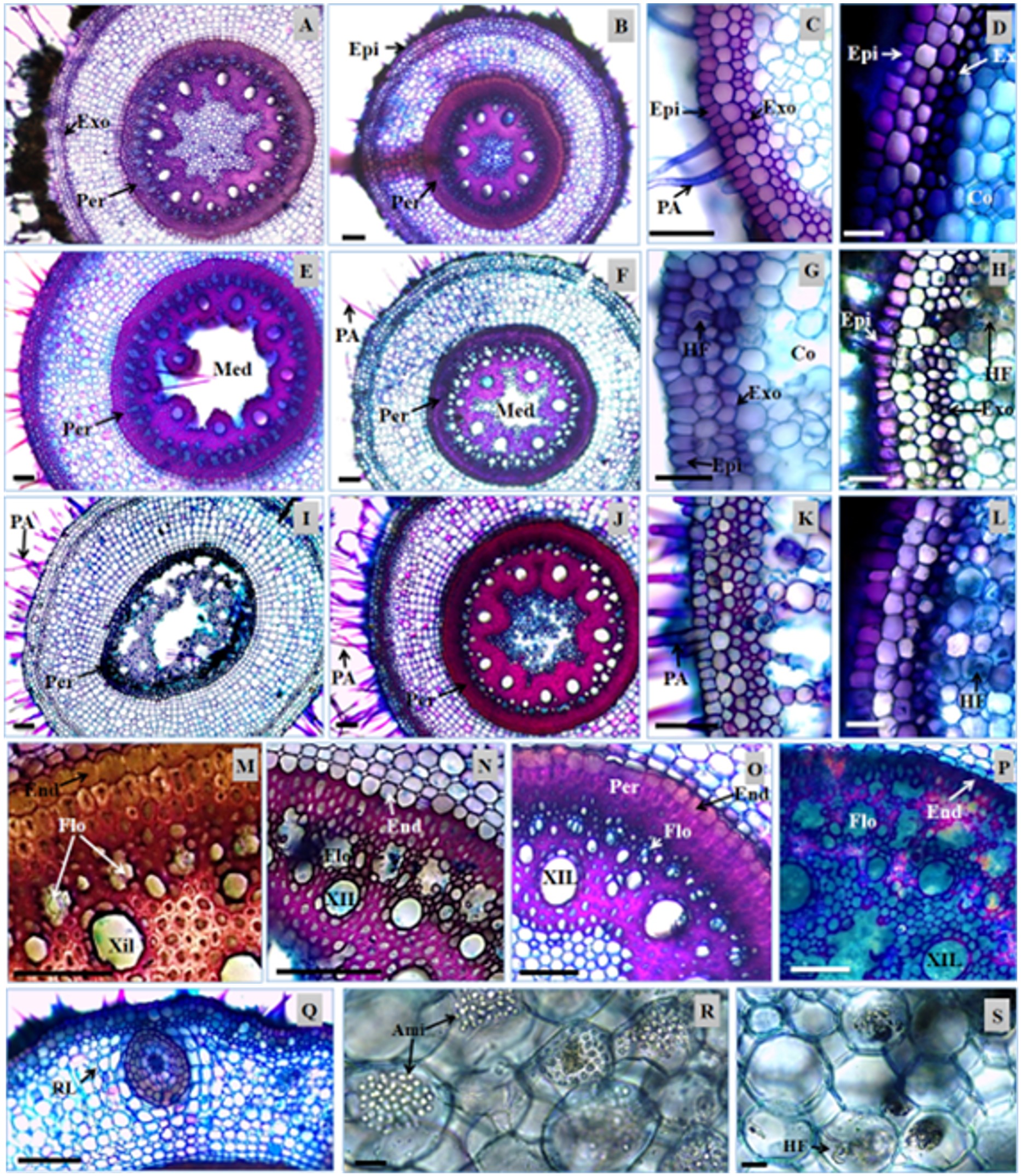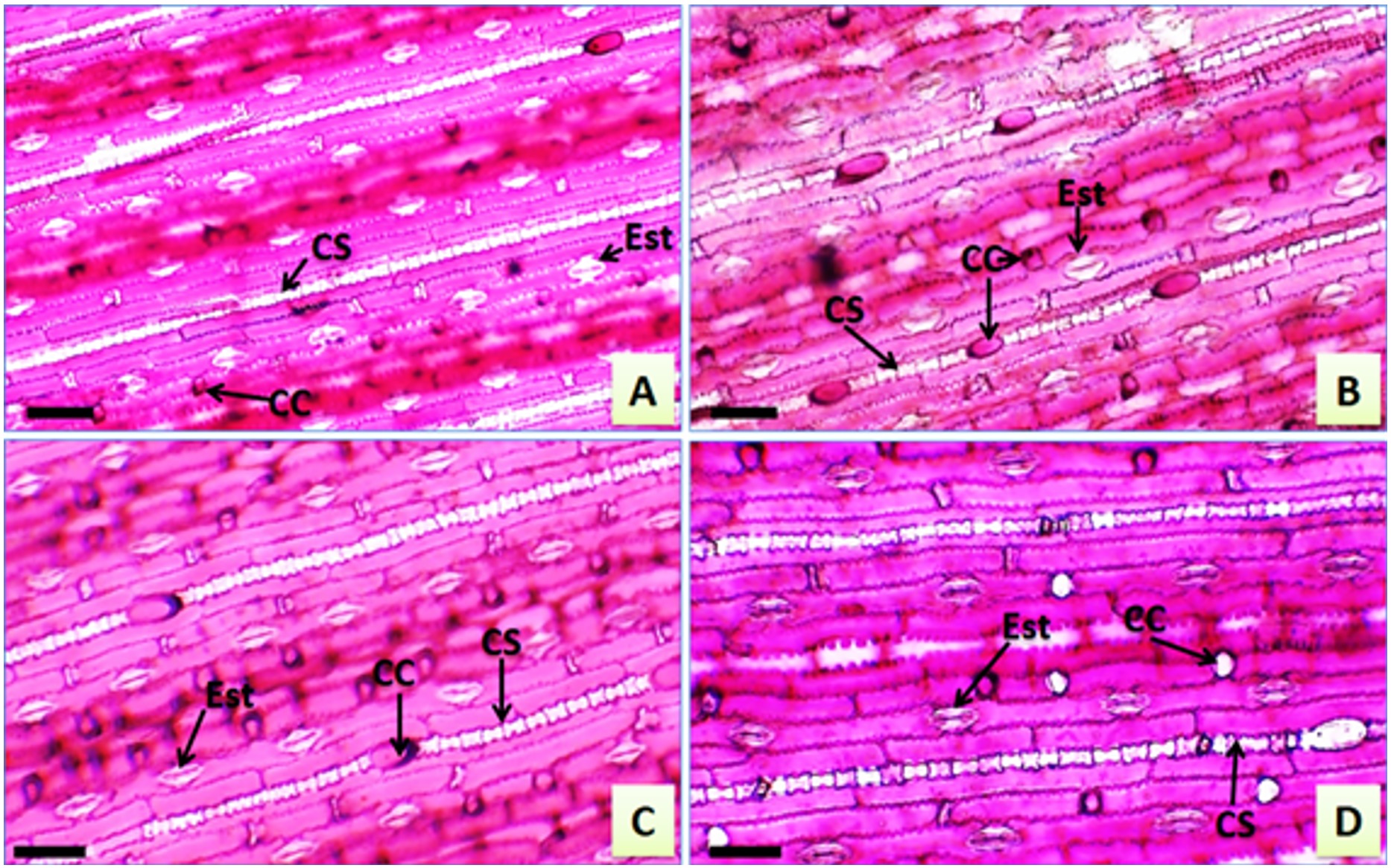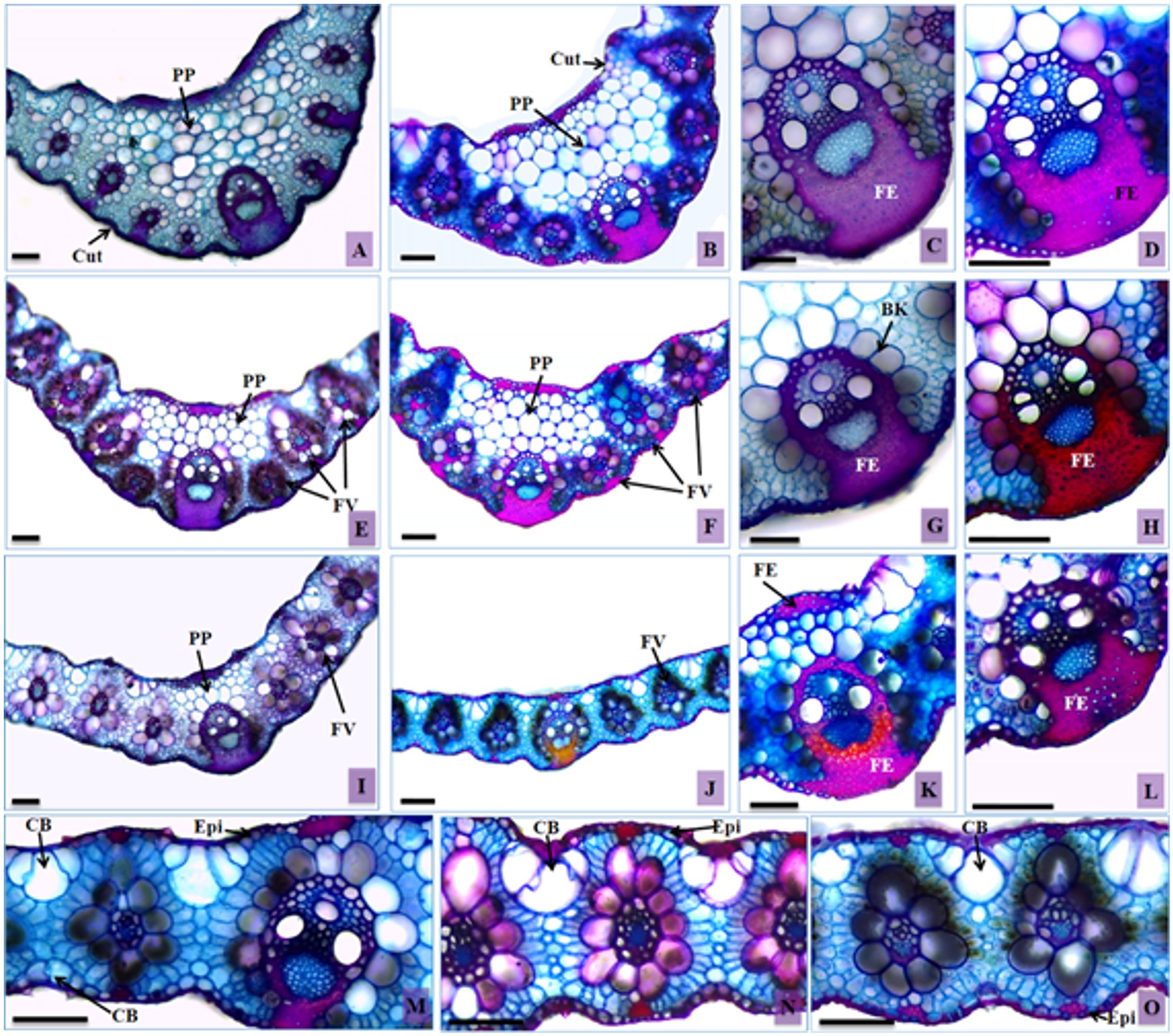Abstract
The quality of forage production is a prerequisite to raising livestock. Therefore, income losses in this activity, primarily cattle raising, can result in the impossibility of economic activity. Through the qualitative and quantitative anatomical study of Urochloa hybrida cv. Mulato II and U. brizantha cv. Marandu, we searched for descriptions and compared changes in the individual vegetative body from populations with death syndrome pastures (DPS). Specimens were collected at different physiological stages from farms in northern Mato Grosso. After collection, the individuals were fixed in FAA50 and stored in 70% alcohol. Histological slides were prepared from the middle third of the sections of roots, rhizomes, and leaves, and the proportions and characteristics of tissues were evaluated in healthy, intermediate, and advanced stages of DPS. Changes were compared between cultivars. With the advancement of the syndrome, the following changes were observed: a more marked decrease in the length of roots in U. hybrida; disorganization of the cortical region of the roots and rhizome cultivars; fungal hyphae in roots and aerenchyma formation in U. hybrida; a decrease in sclerenchyma fiber proportions in roots and leaves; sclerification of the epidermis of U. brizantha rhizomes; and an increase in pericyclic fibers in U. hybrida. Furthermore, there was a decrease in the volume of epidermal cells of the abaxial face of the leaves of both cultivars, with a greater reduction in U. hybrida; a gradual decrease in thickness in the midrib of leaves similar to leaf mesophyll; conduction system obstructions; partial or total cell lysis in roots and rhizomes affected by the syndrome. Obstructions in sieve tube element and companion cells, and sometimes obstruction in xylem vessel elements. The evolution of DPS in cultivars was similar, but there were variations, arising probably from the physiological response to stress, such as aerenchyma formation in the root and increased pericycle in the rhizome of U. hybrida.
Keywords:
forage; plant anatomy; fungal hyphae

 Thumbnail
Thumbnail
 Thumbnail
Thumbnail
 Thumbnail
Thumbnail
 Thumbnail
Thumbnail



